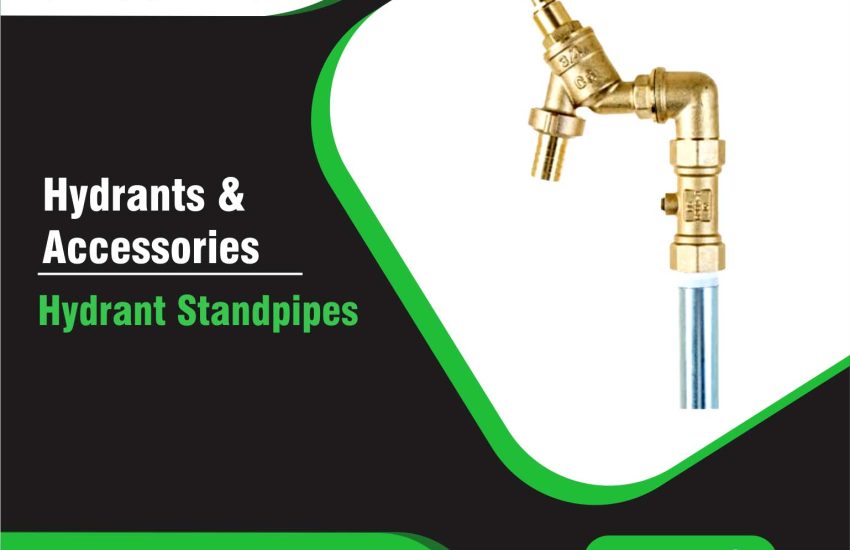Hydrant Standpipes are vital components of fire safety systems. They connect fire hoses to a water supply, ensuring quick access during emergencies. Standpipes provide an easy and efficient way for firefighters to draw water from hydrants, especially in areas where the hydrant’s outlet is hard to reach. This article outlines the specifications, features, and benefits of hydrant standpipes, optimized with SEO keywords.
What is a Hydrant Standpipe?
A hydrant standpipe connects a fire hydrant to a vertical pipe, making it easier for firefighters to access water. It extends upward, allowing easy connection of hoses at an accessible height. Standpipes are essential in areas where hydrants are difficult to access or located in low-lying spots. They ensure smooth firefighting operations by providing a reliable water source.
Key Specifications of Hydrant Standpipes
When choosing a hydrant standpipe, consider several specifications for optimal performance:
1. Material Construction
- Steel: Many hydrant standpipes are made of steel, offering durability and strength. Steel can withstand high-pressure water flow and resist wear.
- Stainless Steel: Stainless steel is highly resistant to corrosion, making it ideal for wet or harsh environments.
- Ductile Iron: Ductile iron is another option. It provides strength and shock resistance, making it suitable for heavy-duty use.
2. Size and Dimensions
- Diameter: Hydrant standpipes come in various sizes, typically ranging from 2 inches to 6 inches in diameter. The correct size depends on the flow rate and the specific needs of the fire protection system.
- Height: The height of a standpipe can vary from 4 feet to 12 feet. Choose the height based on local conditions and accessibility.
- Connection Type: Standpipes are designed with connection types like NH (National Hose) threads, NPT (National Pipe Thread), or Storz connections. These ensure compatibility with fire hoses.
3. Pressure Rating
- Hydrant standpipes must handle high water pressures. Typically, the pressure rating ranges from 150 psi to 300 psi, depending on the local water supply system.
4. Flow Rate
- Hydrant standpipes support varying flow rates, typically between 250 GPM and 1500 GPM. Ensure the standpipe supports the required flow rate for firefighting.
5. Corrosion Resistance
- Standpipes are often galvanized or made from stainless steel to resist rust. This feature extends the standpipe’s lifespan, especially in outdoor environments.
6. Fire Hose Connection
- Standpipes have male or female threaded connections or quick-connect fittings. These features ensure a fast and secure attachment of fire hoses.
Features of Hydrant Standpipes
High-quality hydrant standpipes offer several features for effective firefighting:
- Durable Construction: Made from steel, stainless steel, or ductile iron, standpipes are built to withstand pressure and environmental factors.
- Corrosion Resistance: Many standpipes come with galvanized coatings or are made from stainless steel, offering protection against rust and wear.
- Versatility: With various connection types, hydrant standpipes are compatible with multiple fire hoses, ensuring quick setup during emergencies.
- Ease of Installation: Hydrant standpipes feature flanged or threaded connections for easy integration with existing fire systems.
Benefits of Hydrant Standpipes
Hydrant standpipes improve fire safety in several ways:
1. Quick Water Access
- Standpipes allow firefighters to access water quickly. They are especially helpful in locations where hydrants are hard to reach.
2. Enhanced Firefighting Efficiency
- The standpipe design enables fast connection to hoses. Firefighters can start delivering water almost immediately, improving response times.
3. Durability
- Hydrant standpipes are designed to last. They are made from durable materials like steel and stainless steel, capable of handling high-pressure flows.
4. Corrosion Resistance
- With features like galvanized coatings or stainless steel construction, standpipes resist corrosion, ensuring long-term reliability.
5. Installation Flexibility
- Hydrant standpipe offer flexible installation. They can be adapted to various firefighting setups, providing easy access to water wherever needed.
6. Low Maintenance
- Standpipes are easy to maintain. Periodic inspections and cleaning ensure they remain functional during emergencies.
Maintenance and Care of Hydrant Standpipes
Maintaining hydrant standpipe is key to ensuring their reliability:
- Routine Inspections: Regularly check the standpipe for signs of damage or corrosion. Ensure that all components are in working order.
- Cleaning: Keep the standpipe clean and free from debris. This helps maintain a steady water flow and prevents blockages.
- Pressure Testing: Periodically test the standpipe’s pressure to confirm it meets the required standards for emergency use.
- Lubrication: Lubricate threaded connections to prevent wear and ensure secure attachment to fire hoses.
Conclusion
Hydrant standpipes are crucial for efficient fire safety systems. They provide easy access to water from hydrants, especially in challenging environments. Made from durable materials like steel and stainless steel, they offer long-lasting performance. With features such as corrosion resistance, adjustable heights, and compatibility with fire hoses, hydrant standpipe enhance firefighting efficiency and safety. Proper maintenance and installation ensure their readiness during an emergency.


